
This rider fulfills a lifelong dream, and finds paradise in the dust and winds of Chile
Dear Reader: This is the overview for a series on this horse ride in the great Atacama Desert as offered by Unicorn Trails, which kindly offered me a last-minute chance to join the trip. All references to companies, products I use are mine alone; I do not have financial relationships with any of them. The traveler is invited to do their own due diligence before taking on any kind of challenging ride such as this one. All links are offered as a courtesy.
Lara Macarena, tiny, effervescent as a flute of sweet champagne, sat patiently next to me as I pointed Jocko, my black criollo, away from our small group. Moments later they would thunder away, and Jocko would express his justifiable irritation at being left out of the pounding fun.
While this wasn't what I'd had in mind, it was what I got, nobody's fault but my own clumsiness. Lara's happy chatter and endless enthusiasm for horses and the sweeping vistas in all directions more than made up for the bum knee that I'd given myself before I even mounted Jocko for our first day. However, as it turned out, being strictly limited on a ride where I'd envisioned myself galloping at speed against the backdrop of intense blue sky was a gift of grand proportions, both as a rider and a writer.
Such are the reasons I ride, and I write.
Let's back up. I've taken lengthy point-to-point trips by horse all over the world, sometimes extending them into a full month. I'm a good rider, not an expert, but easily adaptable to new breeds, tack and local challenges. Being stuck without a Big Ride on the horizon since Covid, like many other adventure riders, I was chomping at the proverbial bit for something to remind me of how much I love to sink my rear into the saddle and take in the world by horse.
Unicorn's Sarah King, in response to an outreach I'd made when a five-week window opened up in my schedule, let me know that the Atacama ride had a spot. In seconds I'd paid for it. Minutes later I had a flight booked.
It had been two years, and like so many of us I couldn't wait to get back to the trails.
In South America alone, I have ridden from Costa Rica to Patagonia, Peru to Ecuador, but the Atacama was always a dream. There was just something about riding in such a vast, overwhelming place that has always appealed.
Suddenly it was no longer a mirage. The great Atacama shimmered in my immediate future. I barely had time to pack. I was going to spend eight days in the driest place on earth on a fine horse, then tack another three weeks in Chile for the fun of it.
Across the span of more than a week, it would be impossible to share with you all the intense magic, the visual imagery and the gorgeousness of the rides, for it changed swiftly some days hour by hour. I'll do my best to offer highlights, with the hopes that you are inspired to see what I saw and be equally charmed. For the trip isn't just the desert.
As you well know, any adventure ride is gauged in part by your fellow riders, the guides themselves, the support crew as well as, of course, the horses and your tack. In all my trips those elements have rarely coalesced so perfectly as they did here. Part of it is the place, but all the rest of it is driven by the people.
Our trip was the first that Esteban and Lara would run after two years' wait from Covid lockdown. Lara told me that they had made some changes, and were taking the opportunity to bring family along, give some new horses experience on the ride and other critically-important strategies to prepare for the new season.
My fellow rider, Katharina, a German woman less than half my age, and I were in for a treat. The family is tightly-knit, made up of excellent riders. Above all they have a passion for sharing this wild place so that others can experience it as they do.
Before you leave, you spend the night in a rustic hostal in Chiu Chiu, where you visit a church that is almost 500 years old. Behind your hostal there is a pen full of curious llamas. Beyond that lie ancient Indian ruins which make for wonderful exploration and photos. There, a local tradition enthusiast and good friend Pepe would lay out a blanket for the traditional offering and prayers to Pachamama, the fertility and earth goddess whose good will we would request (and we got) for the trip's safety.
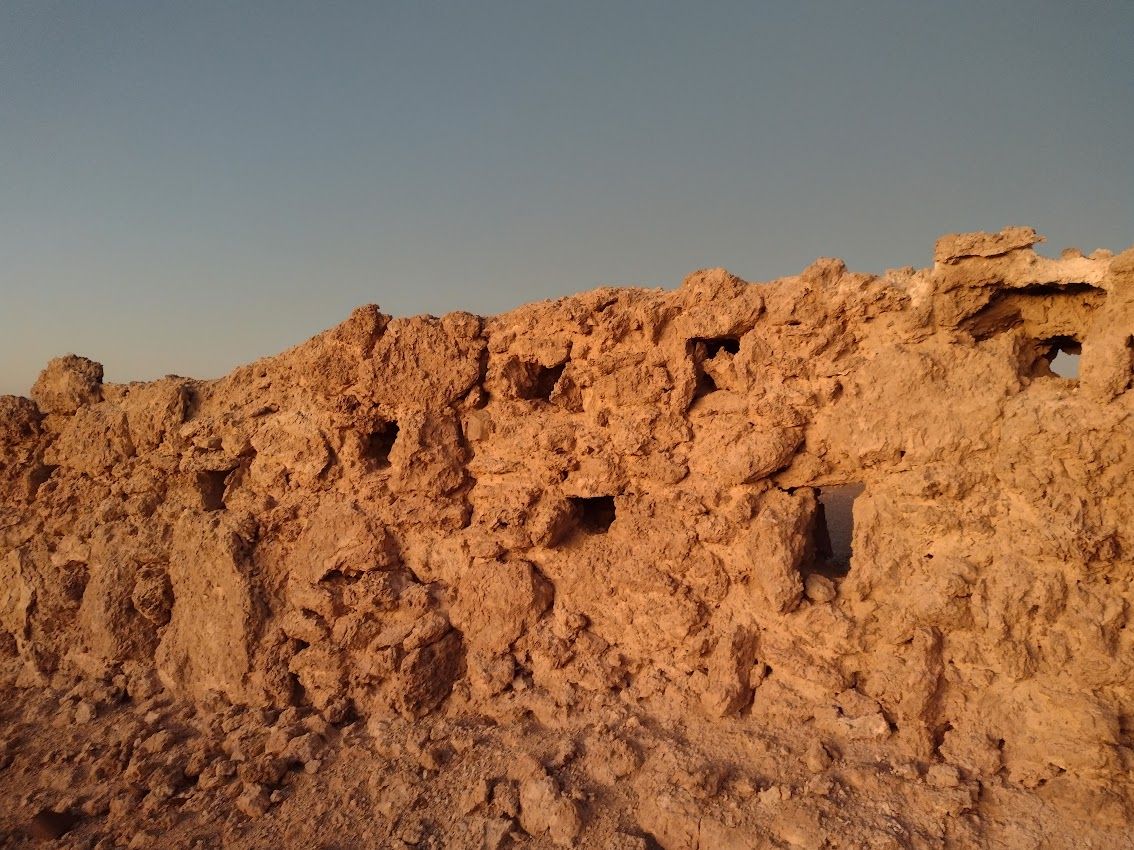
For those like me who love a lively, forward-going horse and plenty of gallops, the first day- and often plenty of times thereafter- Esteban would lead off for a headlong rush across the dusty soil.
My knee injury, which came from taking luggage down the stone stairs and which I underestimated, made subsequent gallops impossible. Again, nobody's fault but my own.
However, while I couldn't gallop, the guides made sure everyone else could, so that one injury didn't impede the joy for everyone else. Not only is that excellent guiding, I always had a family member with me so that Jocko could stay calm. That allowed me to learn far more about the desert and the culture as we walked or trotted back to the group.
For me as a rider, that might have been frustrating. But for me as a writer, it was priceless.
Each day was a revelation. We rode across slices of rock so dry that the horses' hooves made them tinkle like piano keys. We followed vast, undulating vistas of lush green snugged next to the salty rivers at the base of ancient canyons.
The sky, for days a perfect robin's egg blue, created a counterpoint to the deep ochres, browns and whites of the ever-changing rocks and mountains. Dust devils rose and twisted against the sky, whirling dervishes of fine white sand dancing like ghosts across the scrub.
For those of us accustomed to being given raisins, nuts and other gorp meals for midday, lunches were another revelation. Lara somehow managed to pull off bright, fresh vegetables for tacos, fish or mussel salads, with all the supplies brought in by saddlebag and cut and mixed on the spot. We were even able to make small fires to cook the tacos, which we would fill with cool, sweet tomatoes, corn, black beans and chunks of roasted chicken.
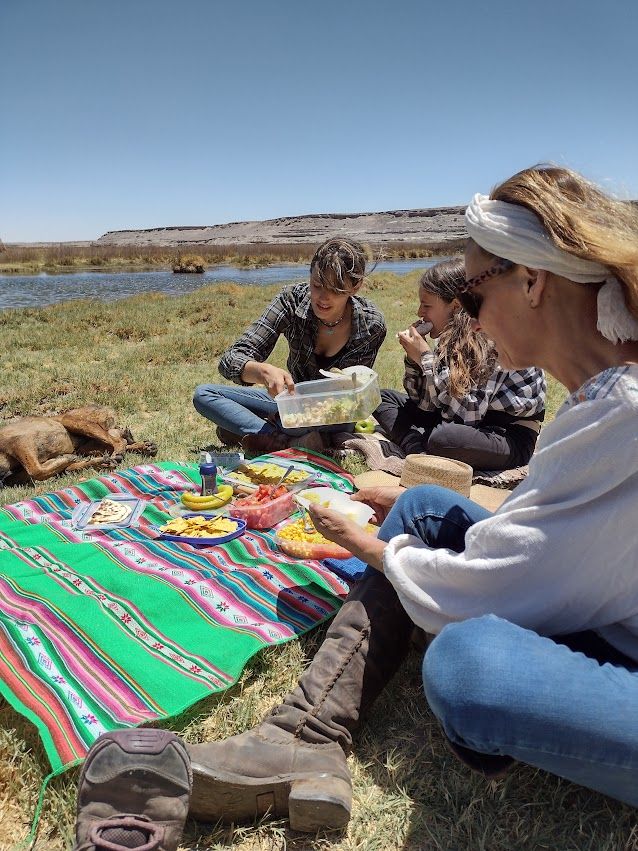
I had brought supplies of my own -nut butters, for example- but those were quickly set aside for the cucina-fresh ingredients that we tucked into every day.
About the middle of the trip we arrived in the lush, high village of Caspana, where we stayed in a hostal. There we were able to wash off the accumulation of dust and grime. Esteban and Lara made sure that we were able to stay where we could see how locals lived, view architecture that predated the Conquistadors, and the locals would benefit from our being there as well.
Even here in the high dry air, the town of Caspana bloomed with enough vegetables and fruits to transport and sell in the Calama markets some 52 dusty miles away.
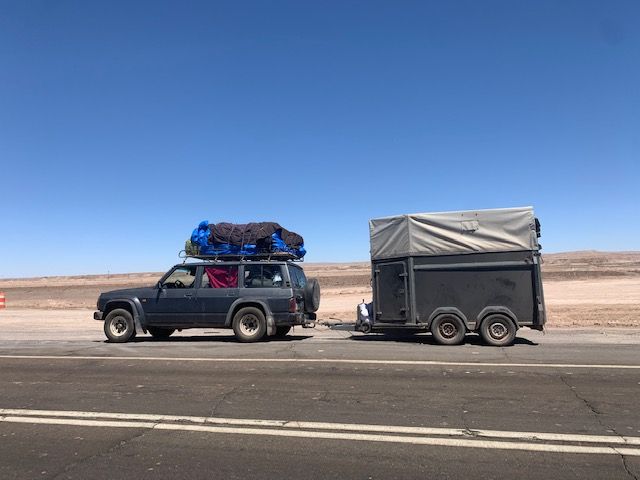
At night, the support crew, made up of one of the sons (Taoma) and one of the daughter's boyfriends (Simon), and Carlito the cook met us with hay, water, our luggage, the tents and all the food for the night's feast. The two young men were particularly helpful in that my bum knee made it challenging to set up my own tent alone.
While Katharina, in that way of all good riding companions, was ever there to help with a shock cord or to get the sand out of the tent in the mornings, the additional assistance made a huge difference to someone with a non-working leg. At no time was I made to feel like an imposition. If anything, I felt badly if I refused help, for it was always so generously offered.
For those who really love more than a gallop, but an additional bit of suck-in-your-breath difficulty, this trip is designed for you. Here in the Atacama, after your first day of getting acclimated, you will find yourself climbing up seemingly impossible faces of mountainsides. Then, heading down switchbacks which, from the ground looking back up, seem even more improbable.
The criollo, which will be familiar to those who ride in South America, is as sure- footed and steady as a horse gets. You learn to trust two things: the guide in front, Esteban, who would walk or ride ahead to ensure safe passage and painstakingly either move or remove rocks which might be problematic.
You also learn to trust your horse, who doesn't wish to go tip-over-teakettle any more than you do. In this regard, if you are not at least an intermediate rider, I wouldn't recommend the Atacama until you are. Sometimes the descents are long and complex, involving sharp hairpin turns and and a good tight grip with the legs on the saddle at all times. That said, personally, those days when we had those kinds of hair-raising switchbacks were the best, for they tested our mettle, our patience, and our willingness to trust that we'd be fine.
We always were, too. Katharina and I compared knee bruises at the end, likely a result of ensuring that where the horse went, so would we. We rode broad, wide, comfortable saddles with thick sheepskin. I brought my own custom sheepskin which is cut and fitted with ties for any kind of saddle. The saddlebags were generous and we were able to carry supplies with us which often came in handy, such as a jacket when the winds got chilly, and the ever-present and essential water supply.
We often took our midday meals in the windbreak of an ancient dwelling, reduced now to rock walls. There we'd tie off the horses, settle in for a feast, and look around at the occasional stunning green mountains which appeared in the middle of all that red, or go looking for arrowhead tips or pieces of ancient pottery.
There was plenty of wildlife, from herds of wild donkeys to llamas, to guanaco (a wild llama) to foxes and all manner of creatures which moved too fast to be identified. There was a swift-moving ostrich-like bird and flamingos, and everywhere, paired geese or ducks rising from the bright green rivers.
Along the way, we often found ourselves next to bubbling natural springs, so bring a bathing suit. The bubbling waters allowed us to wash off and feel sparkly if only for a bit before putting our dusty breeches back on and rejoining the trail.
Speaking of sparkly, especially on your last night, sleep outside. It isn't just that the twilight winds are likely to drop a steady rain of dust on your face and everything else in the tent -just ask me- sleeping outside allows you to watch the entire free light show in one of the last vast places on earth untouched by light pollution.
You will never think of the night sky the same way again.
Finally, the single greatest gift of all: silence.
Silence so profound, so deep, that the singing of the wind in your ears is almost too loud.
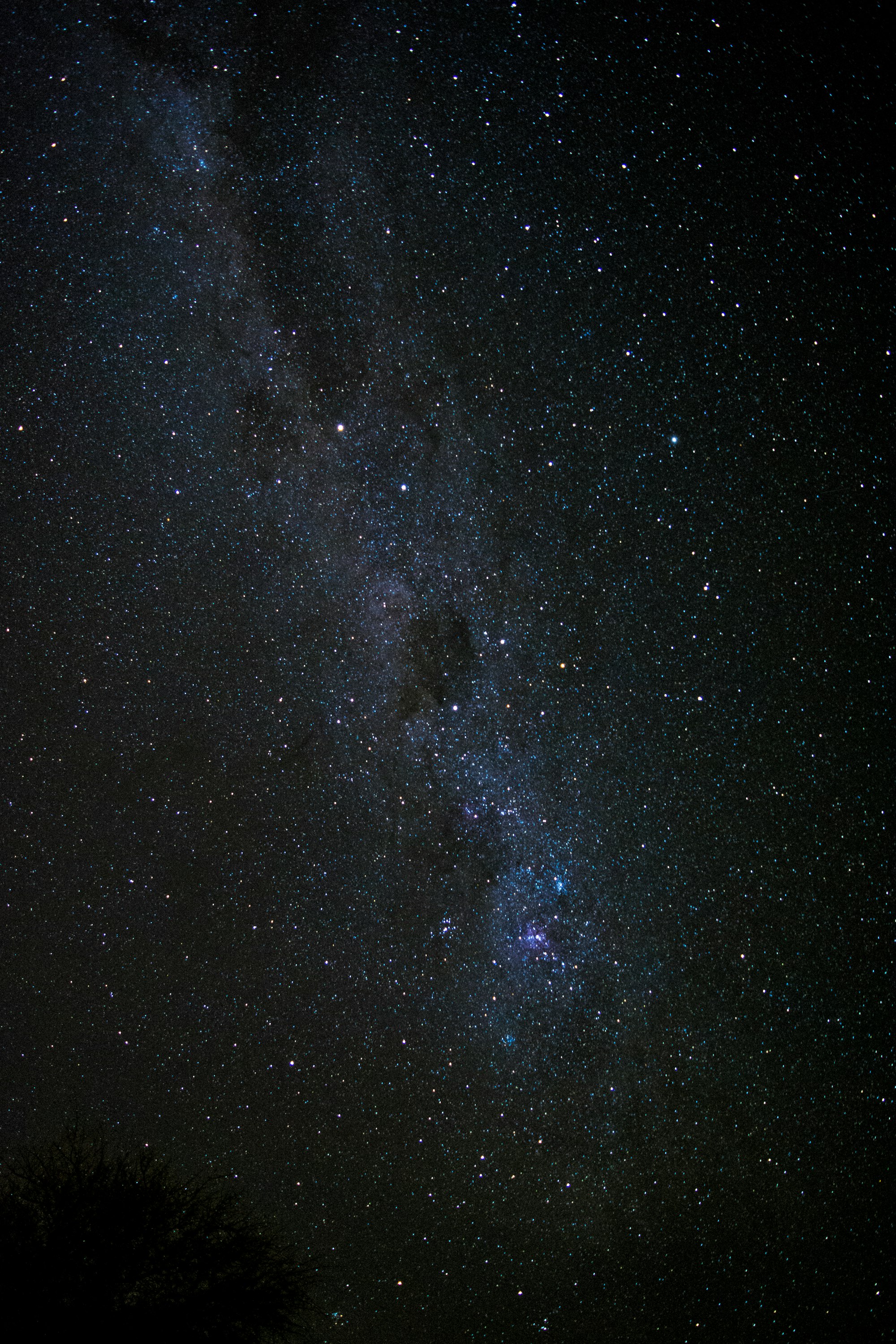
That silence is just one of the many reasons I wanted to ride the Atacama Desert. It is extremely rare to spend days on end so far from anything that you can comfortably relax miles from invasive noise, notifications, noxious fumes and even more noxious people.
That is the true gift of the Atacama. Silence.
A silence in which you can renew your relationship with your deepest self, a self you may never have visited before. To sit for hours on a fine, steady horse while watching the distant hills inch closer, bringing the promise of a good night's sleep and a night full of diamonds overhead that only a few lucky ones can see.
I might have loved running full tilt along with my fellow riders, grinning ear to ear as the wind swept Jocko's mane skyward. That wasn't my real gift. Instead it was the immense silence which enveloped me like a perfect poncho, further surrounded by capable guides and the kind of landscape that is worth traveling long ways to experience.
At the end you are dropped off at Casa Don Tomas, a lovely hotel with plenty of room, sunshine, good food and tons of hot water for washing all the dust away. The bustling tourist town of San Pedro de Atacama is full of dusty roads and shops where you can purchase your own Chilean poncho or a bolt of brightly colored Bolivian cloth.
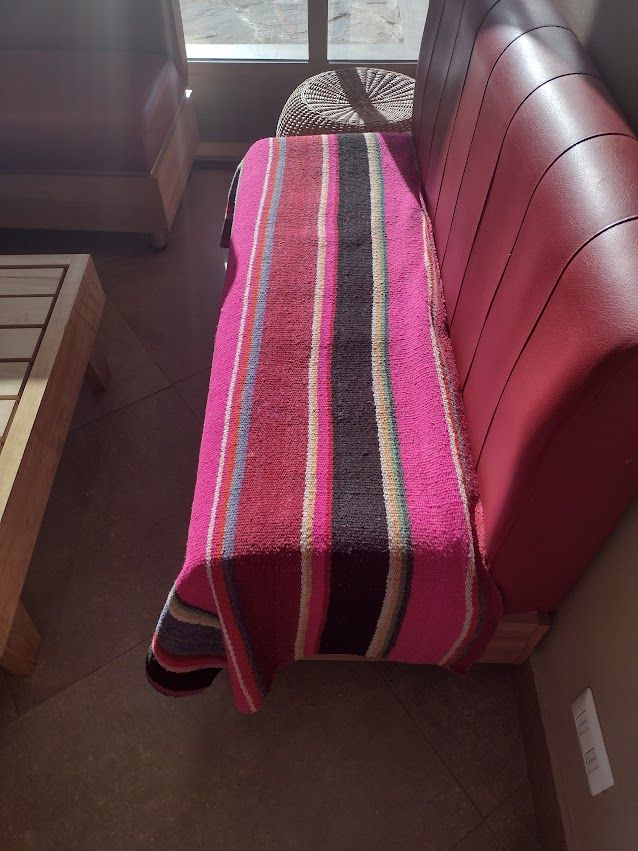
Here at this gracious hotel, you are left to your own devices until about 5 pm, when there is just one last thing. Esteban and Maca drive you out to the salt lakes about an hour away to photograph the migrating flamingoes. You watch the sunset flame the sky one last time before you kiss the desert goodbye...for now.
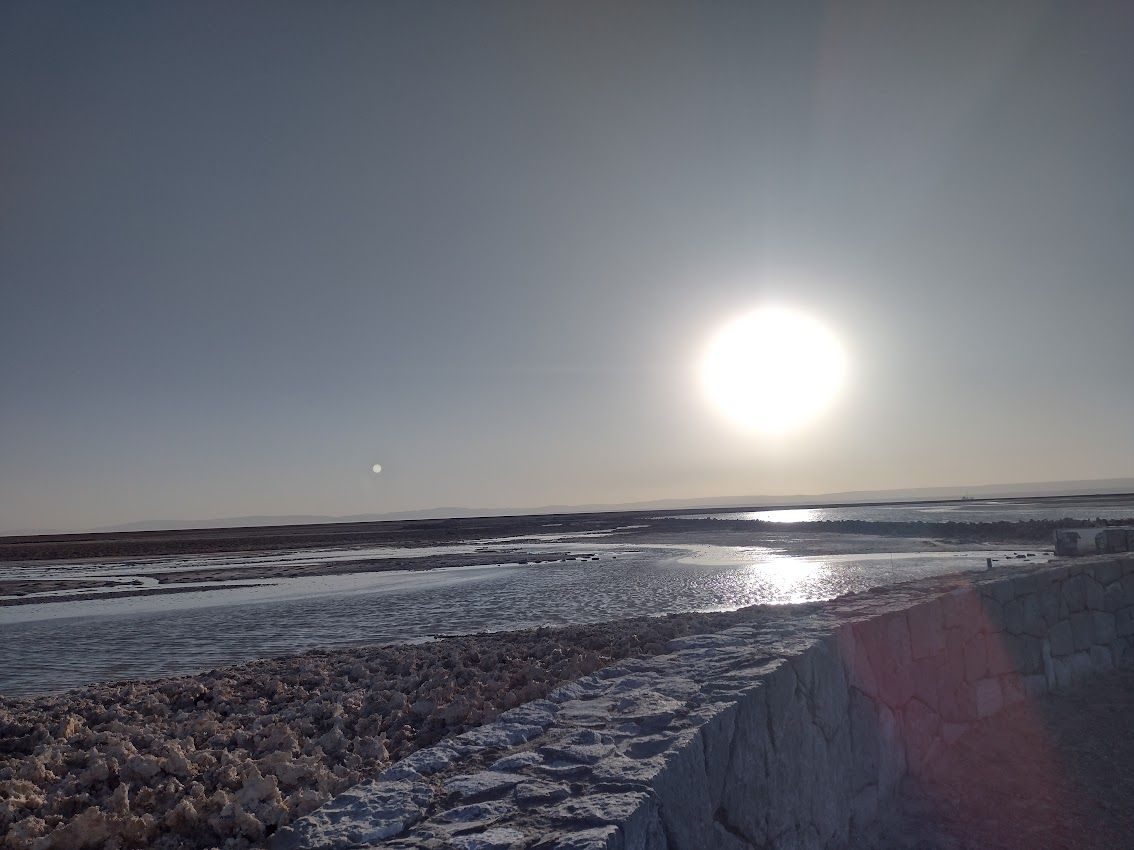
Should you ride the Atacama?
As with all things, it depends. As I found with Unicorn's challenging Bale Mountain ride in Ethiopia, the more epic the ride, the more likely you will find yourself in like company. You pay more for such a ride but as with all investments, you get more on this kind of adventure.
There will be challenges to your skills and the sights most will never see than if you settled for a fine canter on the seaside in a popular spot. Those too are lovely, but out here in the Atacama you are tested in ways you may not expect.
Again, this ride is not for rookies or inexperienced riders. It requires confidence in the saddle, a decent level of fitness and a willingness to commit fully to trusting your guide and your horse on sometimes hair-raising passes.
These are not easy canters across flower-strewn meadows. Such trips take you not only far outside, but deep inside. That is why I ride. If you are all about the horses, the land, the culture and whatever challenges may arise from a sometimes difficult adventure, the Atacama may well belong on your bucket list.
Perhaps it's time to make that mirage into the miracle that is the Atacama Ride. I did, and this is one ride I want to repeat.
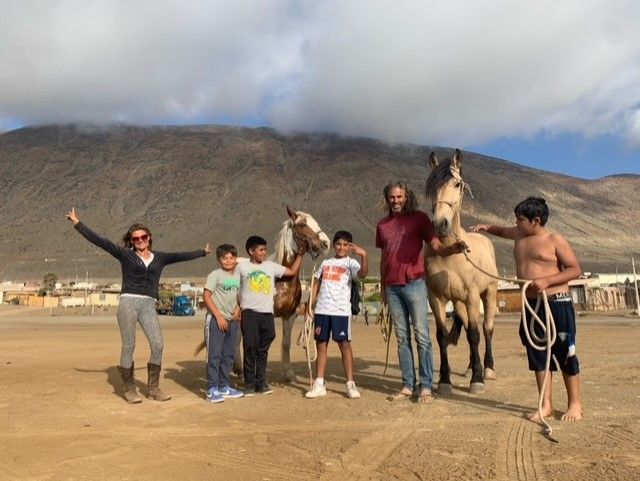
A bit of advice from this experienced rider
Before you go, here are some things you absolutely must know, if this is your dream too. The suggestions offered are from many years of living at high dry altitude. Please respect the conditions here in the Atacama (and all big adventure rides):
- If you're not accustomed to altitude, please consider getting Diamox from your doctor. You can of course chew coca leaves. I did both. They work. Your teeth look weird but who's looking, right?
- Bring, or buy locally, something for your throat (I like the tiny throat sprays, available in Calama at local pharmacies) gentle nasal spray (helps with nose bleeds, also available in Calama) and above all, dense, thick hand cream. This kind of dry desiccates. Skin splits on your fingers. I also brought kinesiotape- I prefer Rocktape- and a small pair of scissors which I used almost daily to deal with the tiny cuts which can make using your hands miserable. As for your nose: I lived in Colorado for fifty years and never once got a nose bleed. Here, my nose bled daily. Sprays help a lot. This kind of dry is another whole level of dry. Please don't underestimate it or the effects of altitude in combination.
- About those hands. Having almost no time to plot out my packing list, the single most important item that I failed to bring and which could truly have ruined my trip was a very light pair of riding gloves. Bless Lara, who had an extra pair. All too often we slather the face, the ears, everything but the hands. At this altitude, and this kind of blistering sunshine, you can end up most unhappy if your hands aren't protected. I had brought lots of heavy gloves but nothing that simply provided protection.
- Let's talk skin. You need the best SPF money can buy for your skin, and plenty of it. Whether or not you ride with a helmet (recommended), the sun reflects off the sand and the intense dryness is cruel. I went through multiple tubes of powerful moisturizer. You can get big tubes of 50 SPF sun block at Calama pharmacies.
- Bring a small tube of bug juice. There are two lunch stops where the mosquitoes are intense. You'll be very glad you had it, even though in most of the desert there were no bugs to speak of. At lunch near the water, they can ruin your meal.
- Bandannas:I brought three. Assumed I'd use one. Used all three, all day every day. I used nail clippers daily, too. Kinesiotape, again, which I never travel without. Why? Because on big rough rides, you might twist an ankle or bang a knee, as I did. Learn how to tape an injury BEFORE you need to. I can properly tape shoulders, ribs and any limb without help- you should be able to as well especially on the bigger adventures. Rocktape saved this trip for me by stabilizing my knee.
- Protect your eyes: I have dry eyes from living in Colorado for fifty years. If you do, or even if you don't, plan to bring artificial tears. I use Systane. (Visine is not advisable for this, as per my eye doctor, but kindly ask yours as well). I also used soft eye pads (my fave is YIVIEW). Those kept out the nightly dust and protected my eyes from the grit. I also use them on the airplane so they do double duty.
- Consider a protective vest. These days I always wear one, and the day I nearly packed it away was the day I absolutely needed both the vest and the helmet. I know they aren't romantic- looking. However, mine saved me additional injury, and for my riding dollar, that makes vest and helmet worth wearing.
- Bring your sense of humor, your willingness to be humbled, your openness to the majesty of such a unique place. You will never be the same after Atacama. And that is a fine thing indeed.
- Perhaps most importantly, just do it. The world's great places are changing, whether by human encroachment or climate change or both. If you're a solid intermediate rider with good skills at all paces, and the spirit of adventure burns brightly in you, make your plans today.
Comments powered by Talkyard.